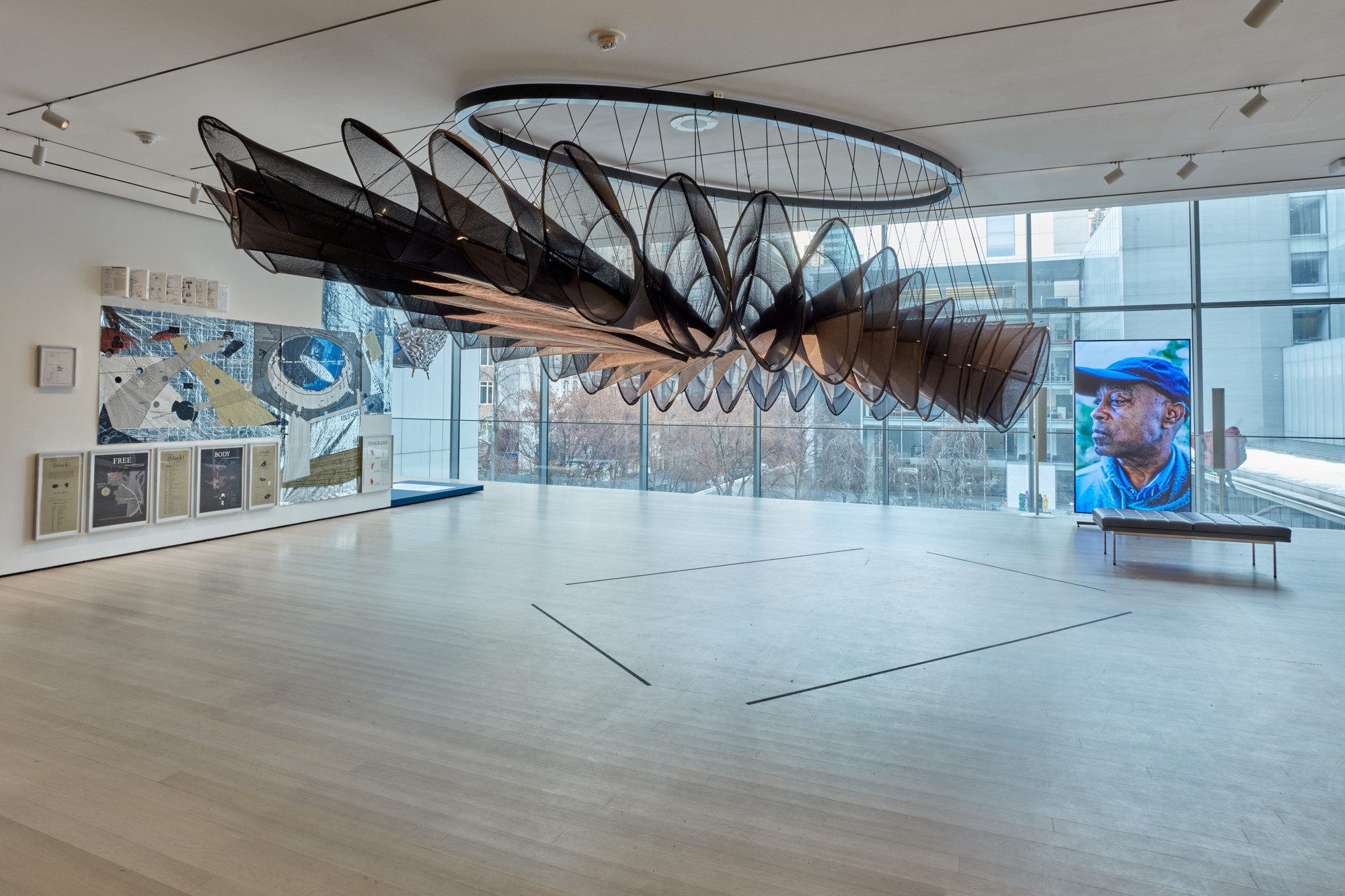Felecia Davis: My name is Felecia Davis. Pittsburgh’s Hill District was a predominantly Black neighborhood that in the 1930s, 1940s was really vibrant. But towards the end of the '50s, Pittsburgh decided this was really valuable land and that it should be torn down to make space for a civic center. People had been hopeful of having the government build back into the community. When that didn't happen, you had protests in 1969. After the protest, people are saying: "Okay, we're gonna make some architecture here and it's going to be a benefit to the community."
Walking into the gallery, you'll see a gigantic suspended black textile flower, made up of 34 different knitted cones. And some of the cones have embedded into them a copper yarn, which makes the textile active. So as a visitor walks around the piece, they hear sounds of different electromagnetic waves captured in MoMA's galleries. And then we've amplified it in a speaker so that you can hear things that are invisible.
So really the work is about bringing people together in conversation. I believe that one of the important aspects of being a black architect is to construct the social around artifacts and around places and around people. That is just as much a part of making architecture as making a building with bricks and mortar.
I've been inspired to work with textiles because this was a skill that I really enjoyed as a child, learning how to sew, working with my mother, working with my aunt. Bringing that into architecture, I can make buildings with textiles that I can lift with my own body, that I can make with my own body. So the textile was a source of liberation.
